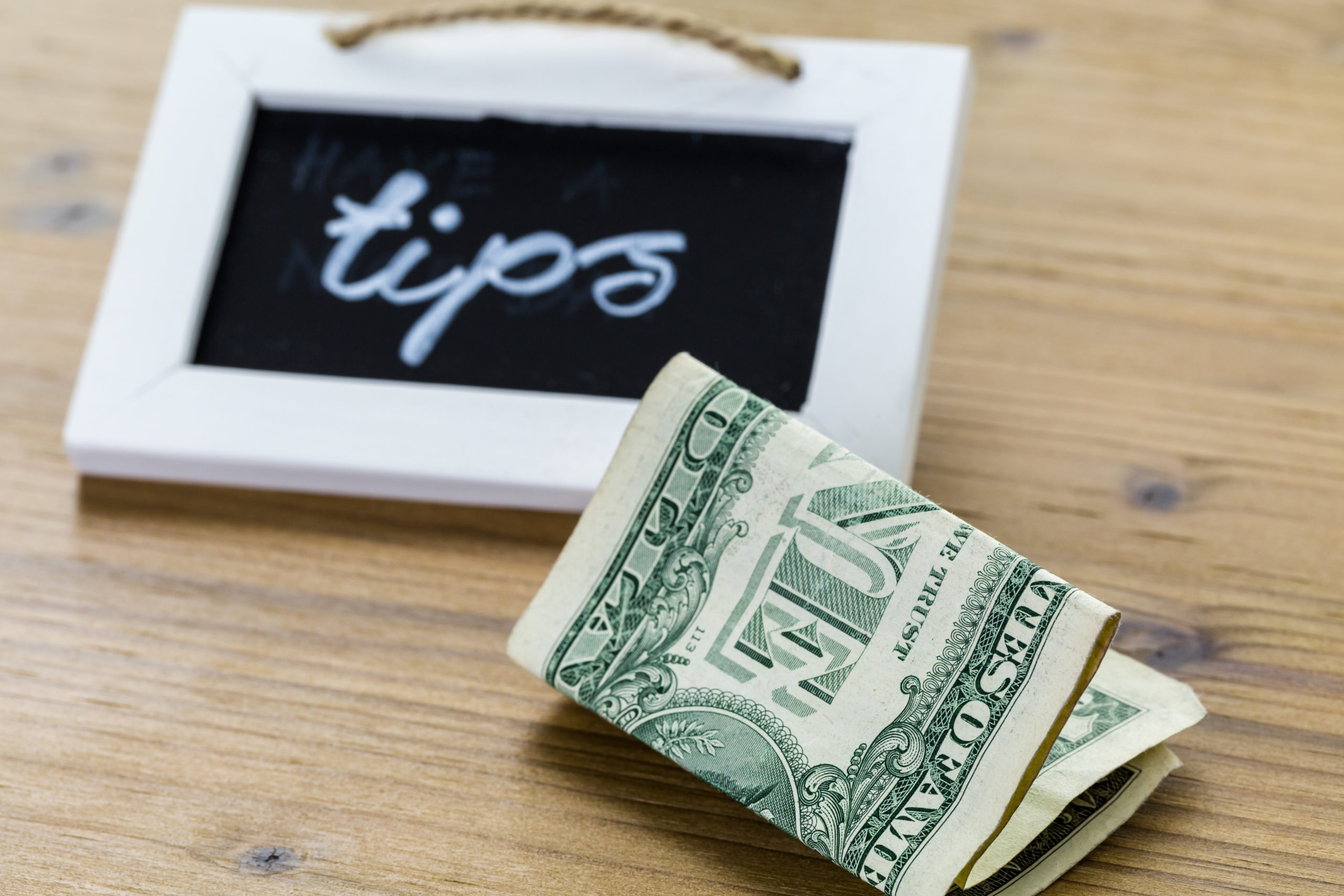In a survey conducted in January through March 2020, there were more than 200 survey respondents from across the United States and Canada giving feedback on tipping. The results? Most wineries allow tipping. When we looked at all respondents, 78% allow tipping. This was even higher in Washington and Oregon where tipping is allowed by 88% and 87% of respondents respectively. Napa and Sonoma wineries reported that 70% allow for tipping while 30% do not. When we look at responses by winery size, for wineries producing under 10,000 cases a year, 80% allow for tipping while those producing over 10,0000 only 74% allow for tipping. The proverbial ‘horse’ has definitely left the barn.
How are most wineries managing their tips? POS tip lines or cash?
POS: Most POS systems allow for a tip line with all regions and sizes of wineries reporting that 68% of their POS systems allow for a tip line. An additional 21% of respondents reported that their POS system allows for a tip line, but they are not using that feature. When we look at tip lines by winery size, we see that those under 10,000 cases per year report that 75% of their POS systems allow for a tip line while those over 10,000 cases per year report that only 59% of their POS systems allow for a tip line.
There has been a lot of discussion around POS systems having a tip line on every transaction with a percentage – how does the guest feel when asked to leave a 20% tip on a $1,000 wine purchase? But how does that same guest feel when unable to leave a tip for an hour experience that was exceptional? Net-net? Ideally, the POS system allows wineries to customize the lines to allow dollar amounts and/or customize the dollar/percentage amounts.
CASH is King: 92% of all wineries report that they allow for cash tips. This goes up to near 100% in Washington and Oregon and under 70% for East Coast wineries. 86% of Napa and Sonoma respondents report that they allow for cash tips. When we look at wineries by size, 97% of wineries making between 2,000 and 10,000 cases a year allow for cash tips, while 88% of wineries making under 2,000 cases a year and 85% of wineries making over 10,000 cases per year allow for cash tips.
Individual, Group, or Mixed Tips? Mostly Individual or Group:
We asked if the tipping policy was geared towards individuals, groups, or mixed. Of all respondents, 40% reported their tipping policies were for the individual, 37% for the group, and 23% had a policy blending the individual and the group. This became quite varied among regions with California and Washington more likely to have policies to tip the individual and the East Coast and Oregon more likely to tip the group. When we look by size, smaller wineries producing less than 2,000 cases per year are more likely to tip the group or have a mixed policy while the larger wineries are more likely to tip the individual.
Experiences, tipping like restaurants? We asked if wineries allowed tipping for specific experiences or all experiences and if tips seemed to be in line with tips typical of restaurants. We were curious about food and wine pairings or seated experiences if staff were getting more tips and if those tips were on par with restaurant tips. If tipping was to follow restaurant trends, then it would be likely to show here with these types of experiences and sizes of tips. Our suspicions were wrong – most wineries allow for tips on all experiences and tips still stayed with restaurant trends.
Most wineries across regions allow tipping on all experiences, with 88% of all respondents reporting that they allow tipping on all experiences. This varies regionally only for East Coast wineries where 69% of respondents report allowing for all experiences. When we look by size, the larger wineries are more likely to allow tipping for all experiences, while less than 80% of smaller wineries report allowing tipping for all experiences.
Most survey respondents reported tips less than or similar to restaurant tips. California, Oregon, and Napa and Sonoma wineries are most likely to report tips similar to that of a restaurant while most wineries in Washington and the East Coast report tips less than that of a restaurant. Region, not winery size determines the variability in tip size.
Reporting Tips
There are legalities with allowing tips, especially since Uncle Sam wants his share. Best practices suggest working with your payroll/HR/accounting team to ensure laws are being followed. According to responses, most are following these best practices. While it adds another layer of complexity to paying staff, it’s an appealing incentive to attract and retain staff. Most wineries see allowing tips as a competitive advantage over other wineries who don’t and incentive for other hospitality staff to come to work in the wine industry.
Wineries reported using payroll or a mix of payroll and cash to pay tips, with only 30% of respondents reporting they pay tips in cash. This varies in Washington with over 80% using payroll or a mix of payroll and cash and in the East Coast where 57% of respondents reported paying tips in cash only. When we look at winery size, most are using payroll or a mix to pay tips, with about 30% of wineries of all sizes reporting that they pay in cash.
Unintended Consequences
We are also interested in other incentive compensation strategies for staff. If there isn’t a complementary incentive compensation program for staff, there may be some unintended consequences – over-pouring, extended time on experiences, giving more than what was ‘purchased’ for the tasting experience, etc. If we have a strong incentive compensation program, then the business objectives are also being met along with great hospitality. We could be letting the inmates run the prison if we aren’t aware of the consequences.
75% of all respondents reported having an incentive compensation program for their tasting room staff. The outliers are Washington with 93% of respondents reporting they have an incentive program and the East Coast with only 46% of respondents reporting they have an incentive program for staff. When we look at winery size, we see that the size of the winery impacts incentive compensation programs as wineries under 2,000 case production (59%) are less likely to report having an incentive program than wineries with over 10,000 case production (87%).
Of those who have an incentive compensation program, most are paying out on wine sales and club signups, while very few are paying on data capture. California, Oregon, and Washington are most likely to incentivize based on club signups while it is more evenly split in the East Coast. When we look by size, we see that smaller wineries producing less than 2,000 cases per year are more likely to incentivize based on wine sales while the larger wineries are more likely to incentivize based on club signups.
Through this survey, we learned that most wineries are allowing tipping and that these tips are in line with restaurant tips. Allowing customers to tip staff – the amount they want to tip on experiences – can have a significant impact on employee retention, which is a concern for most wine regions across the U.S. and Canada. The best practice is to use payroll to pay out tips in keeping with federal and local tax laws. We recommend including an incentive compensation program for staff to ensure that all sales goals are met. If you would like help in designing a tipping or incentive compensation program, we would love to help!




